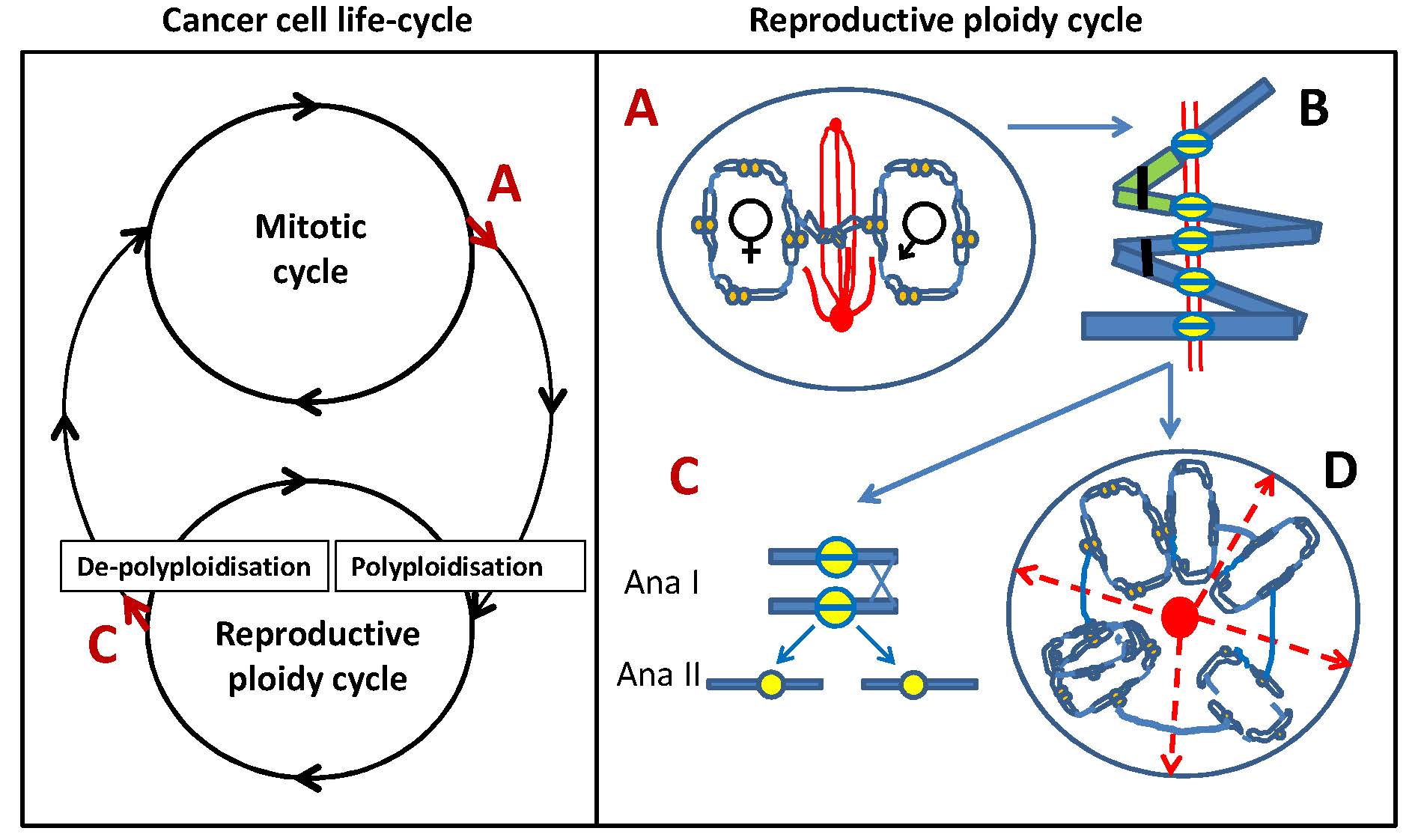Aneuploidy should compromise cellular proliferation but paradoxically favours tumour progression and poor prognosis. Here, we consider this paradox in terms of our most recent observations of chemo/radio-resistant cells undergoing reversible polyploidy. The latter perform segregation of two parental groups of end-to-end linked dyads by pseudo-mitosis creating tetraploid cells through a dysfunctional spindle. This is followed by autokaryogamy and homologous pairing preceding a bi-looped endo-prophase. The associated RAD51 and DMC1/γ-H2AX double-strand break repair foci are tandemly situated on the AURKB/REC8/kinetochore doublets along replicated chromosome loops, indicative of recombination events. MOS-associated REC8-positive peri-nucleolar centromere cluster organises a monopolar spindle. The process is completed by reduction divisions (bi-polar or with radial cytotomy including pedogamic exchanges) and release of secondary cells and/or formation of an embryoid. Together this process preserves genomic integrity and chromosome pairing, while tolerating aneuploidy by by-passing the mitotic spindle and meiotic SC checkpoints. Concurrently, it reduces the chromosome number and facilitates recombination that decreases the mutation load of aneuploidy and lethality in the chemo-resistant tumour cells. This cancer life-cycle has parallels both within the cycling polyploidy of the asexual life cycles of ancient unicellular protists and cleavage embryos of early multicellulars, supporting the atavistic theory of cancer.

